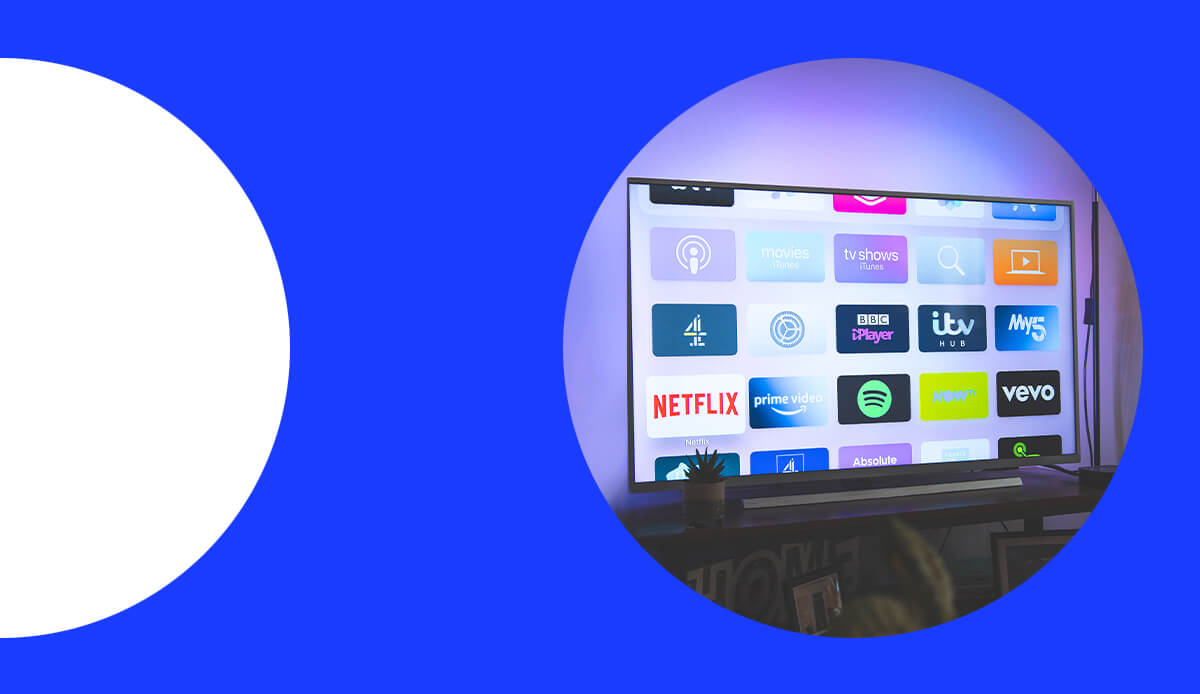
Bridget Hall, Group Account Director for the U.S. talks through why streaming TV is ready for the big time.
We live in an entertainment-obsessed culture. The world’s greatest filmmakers are creating “TV” series with expansive plot lines and stunning detail. The content wars and expensive licensing deals have had a major impact on streaming behavior and new user growth with major shows like Wednesday (Netflix) , Yellowstone (Peacock), and House of the Dragon (HBO Max), driving high viewership in Q4 of 2022 according to Kantar.
But will these companies face a major hurdle with economic uncertainty looming? On one hand, they may have access to more eyeballs, as consumers choose to stay home and entertain themselves to save money. However, users are also canceling expensive streaming services in droves for free alternatives; this is a catalyst for change in the industry. Netflix, Disney+, Hulu, and HBO Max have all introduced lower-price, ad-supported tiers to grow their audiences and reach those younger generations looking to save money. With the introduction of both Netflix and Disney+ plans with ads, the AVOD category overall accelerated and was the fastest growing streaming category (among SVOD, AVOD, and FAST) in the period, up 17% quarter over quarter and 33% year over year. (Kantar)
Streaming TV is also specifically a growing opportunity among Gen Z, who have either embraced the cord-cutter mentality or never had the cord to begin with. Studies have shown that CTV is the third most popular medium behind social media and music streaming, indicating a huge opportunity for advertisers to reach the next generation of consumers.
In short, streaming TV is a big draw for Gen X and Millennials and will likely remain the rich, dynamic, lean-back environment of choice for subsequent young generations.
Although CTV remains a high-reach opportunity for brand marketing, it is more recently growing in popularity for performance marketers who are excited by the ability to use IP addresses and device graphs for effective attribution. All signs point to a robust market ahead. But yet, too many advertisers have a partial understanding of what streaming TV is, why it’s so powerful, and what issues prohibit it from being an even bigger opportunity. Here’s what you need to know.
- Streaming TV is a full-funnel powerhouse. Companies looking only at streaming TV for bottom-of-the-funnel advertising will miss a key component. Streaming TV is as lean-back as linear TV; people are invested in their favorite programs and are primed to watch advertisements that mimic the tone and narrative of the show they’re watching. For example, if you’re watching HBO’s immersive The Last of Us on the ad-supported tier, a commercial break asking you to go online immediately for 15% Off may fail to hit the mark. But a brand telling a powerful story in the vein of the creative that preceded it is more likely to resonate due to its matching tone.
- QR Codes/prioritizing immediate CTAs are not the future – brand building is: Everyone remembers the Coinbase QR ad from last year’s Super Bowl, which was so popular, it crashed the app. In this case, it was the perfect combination of smart creative and a rapt audience conditioned to pay attention to the ads because of the event’s connotation with star-studded and inventive ads. While the second screen still exists, people are making more concerted efforts to put down their phones when they’re watching their favorite shows and are less likely than you think, in a normal viewing situation, to want to pull up their phone and scan a QR code. Focus instead on telling a smart and meaningful story that introduces (or reconnects) your brand to your audience.
- Test diverse publishers and inventory: Many brands get their feet wet in streaming TV by testing programmatic streaming ads, which drives scale across multiple publishers. While this is an efficient strategy for audience discovery, brands can also experience a major advantage of testing smaller buys with independent publishers to understand the best CPMs and conversion rates.
- The next wave is shoppable commerce. This is significantly different from QR codes on 30-second ads during commercial breaks. These are programs where the merchandizing of goods and services is baked directly into the publisher’s business. Think cooking shows where you can easily order all the ingredients and get a downloadable recipe card. Disney+ is at the forefront of this, making items shoppable in its shows’ and movies’ pages on the app. Peacock’s show “Love Island USA” features shoppable commerce where viewers can purchase the outfits worn on the show. Expect Netflix, which has had an eCommerce shop for 1.5 years and a partnership with Target, to make a significant move in this space soon.
- Solving currencies, de-duping, and co-viewing. These thorny issues will shake out in the next year, adding greater clarity on reach and audience value. There has been significant news in this space already in 2023 – with the major broadcast companies (Fox, NBCUniversal, Paramount, TelevisaUnivision, and Warner Bros. Discovery) announcing the launch of the JIC, a consortium that will attempt to create standards to build currencies for CTV, and Nielsen rolling out its Nielsen One Ads, which will attempt to solve de-duping (where users are counted multiple times when watching ads on different devices) and co-viewing (identifying who in a household is watching any given program). Given the impact of these problems and the money invested in potential solutions, we expect meaningful progress in the first half of the year and real solutions before we close the books on 2023.
Brands looking to have a healthy media mix should ensure a healthy investment in streaming TV. It’s the right time to experiment and ramp up investment when a test demonstrates the ability to reach your target audience effectively and efficiently. But the rewards are there for companies that pick the right mix of scale and segmentation and increase their investment to capitalize on the growing streaming TV audience.


